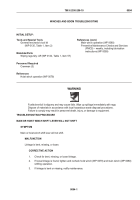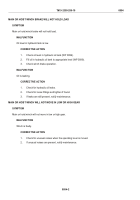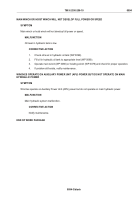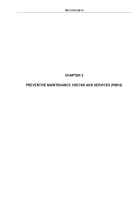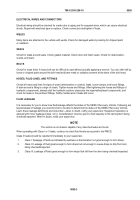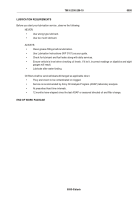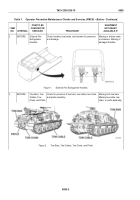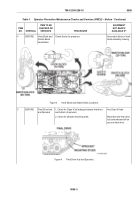TM-9-2350-256-10 - Page 510 of 796
CORROSION PREVENTION AND CONTROL (CPC) - Continued
Damage from these processes will appear as cracking, softening, swelling, and/or breaking. The US Army has
defined the following nine (9) forms of corrosion used to evaluate the deterioration of metals. These shall be used
when evaluating and documenting corrosion.
UNIFORM (or general attack):
Affects a large area of exposed metal surface, like rust on steel or tarnish on
silver. It gradually reduces the thickness of the metal until it fails.
CREVICE:
Occurs in crevices created by rubber seals, gaskets, bolt heads, lap joints, dirt or other surface
deposits. It will develop anywhere moisture or other corrosive agents are trapped and unable to drain or
evaporate.
SELECTIVE LEACHING:
One element, usually the anodic element of an alloy, corrodes away, leaving the
cathodic element. This can create holes in metal.
INTERGRANULAR:
Metal deterioration caused by corrosion on the bonds between or across the grain
boundaries of the metal. The metal will appear to be peeling off in sheets, flaking, or being pushed apart by
layers. A particular type of intergranular corrosion is exfoliation.
PITTING:
This can result from conditions similar to those for crevice corrosion. Pits can develop on various
materials due to their composition. Rifle boxes are big victims of pitting.
EROSION:
Results when a moving fluid (liquid or gas) flows across a metal surface, particularly when solid
particles are present in the fluid. Corrosion actually occurs on the surface of the metal, but the moving fluid
washes away the corrosion and exposes a new metal surface, which also corrodes.
FRETTING:
Occurs as a result of small, repetitive movements (e.g., vibration) between two surfaces in contact
with each other. It’s usually identified by a black powder corrosion product or pits on the surface.
GALVANIC:
Occurs when two different types of metal come in contact with each other, like steel bolts on
aluminum, for example. This is a common problem on aircraft because of their mix of metals.
STRESS:
Term used to describe corrosion cracking and corrosion fatigue.
Where an item is not ready/available due to one of these forms of corrosion, it shall be recorded as a corrosion
failure in the inspection record and the appropriate code (170) for corrosion shall be used when requesting/
performing maintenance.
SF Form 368, Product Quality Deficiency Report (WP 0131), should be submitted to the address specified in
DA PAM 750-8, The Army Maintenance Management System (TAMMS) Users Manual (WP 0131).
Refer to TB 43-0213, Corrosion Prevention and Control (CPC) for Tactical Vehicles (WP 0131), for further
guidance.
ARMY OIL ANALYSIS PROGRAM (AOAP) SAMPLING
Engine oil/transmission oil/hydraulic fluids must be sampled at 25 hours/60 days for engine oil/transmission and
annually for hydraulic fluids as prescribed by DA PAM 750-8 (WP 0131).
When AOAP analysis is not available, change engine oil and filters at 150 hours or 1,500 miles (2,413 km) of
operation, or semiannually (whichever comes first). If Oil Engine, Arctic (OEA) is used, change engine oil and
filters at 150 hours or 1,500 miles (2,413 km) of operation (whichever comes first).
When AOAP analysis is available, change oil and filters at the direction of the AOAP laboratory.
Always use the Expected Temperature Lubrication Table to determine seasonal lubrication requirements. When
changing engine and transmission oil due to seasonal requirements, always change the oil filters.
Sound maintenance practice dictates that AOAP is not a maintenance substitute but is used as an effective
maintenance diagnostic tool. Therefore, if 12 months have elapsed since the last AOAP or seasonally directed oil
and filter change, the oil and filters will need to be changed.
TM 9-2350-256-10
0095
0095-2
Back to Top




